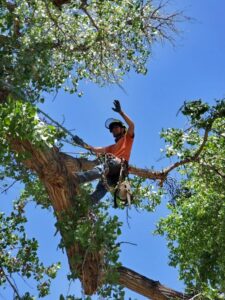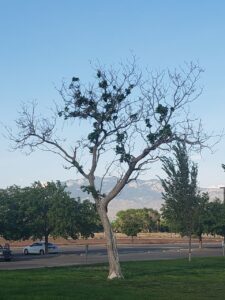Are you a New Mexico resident wanting to plant a new tree on your property? New Mexico has a semi-arid climate, meaning trees planted in the state must tolerate the region’s heat, soil, and environmental conditions. With these factors in mind, in this article, we discuss the best trees to plant in New Mexico and other considerations you’ll want to make, like where to buy trees and how to plant them.
Here are 8 of the best trees to plant in New Mexico:
1) Chitalpa
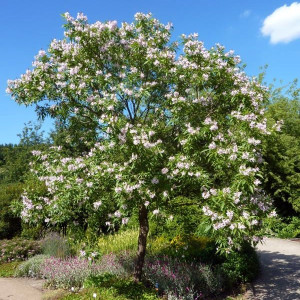
First, this is one of the best trees to plant in New Mexico because it is fantastic for desert climates because it is drought-resistant and fast-growing. Secondly, during the spring, it has the most beautiful white flowers. And third, during the summer, its large leaves provide excellent shade for your yard.
2) Sycamore
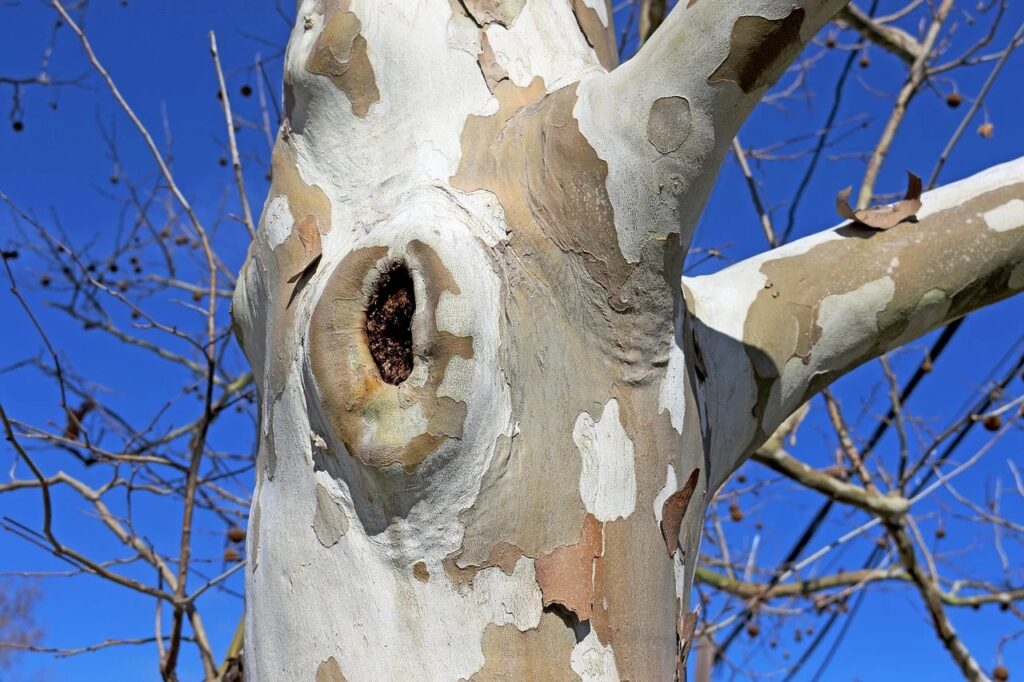
Sycamore is a durable, fast-growing, and beautiful deciduous tree that provides excellent shade during the summertime. Sycamores are ideal as the focal point of a large yard, with deep-root watering systems to encourage roots to grow deeper.
3) Honey Locust

This tree is not native to New Mexico, but they grow well here. Honey Locust is well known for their long, curved seed pods and beautiful yellow-green leaves. Also, these trees grow thorns, so if you want one in your yard, consider pruning lower branches to prevent any family injuries.
4) Cottonwood
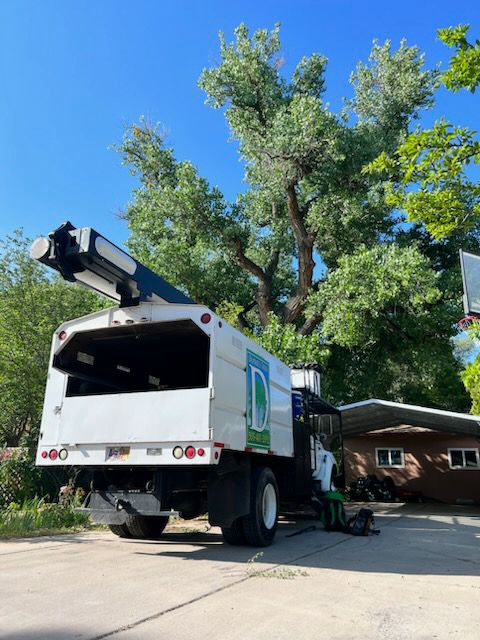
One of the most common native trees in New Mexico, Cottonwood trees can be seen naturally near the Rio Grand. In addition, these trees are fantastic to grow in your yard because of the large sprawling branches and excellent shade coverage. These trees can grow absolutely massive in their 100+ year lifespans.
5) Aspen

Aspen are native to New Mexico and grow well in the dry climate, although they tend to prefer higher elevations of 5,000 to 10,000 feet. Aspens are known for their distinct grey-white bark, round leaves, and beautiful orange, red, and yellow leaves during the autumn.
6) Raywood Ash
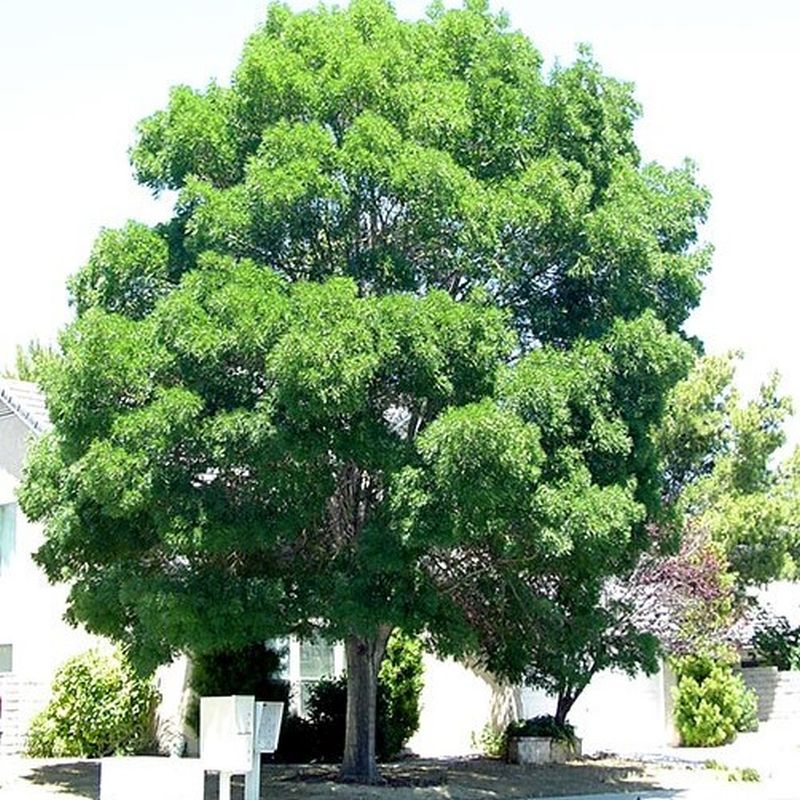
Hardy to drought and reliable for shade, Raywood Ash trees are a gem to have on your New Mexico property. These trees enjoy full-sun exposure and grow quickly.
7) Austrian Pine

If you’re looking for a large, native, and evergreen tree, you can’t go wrong with an Austrian Pine (also known as a black pine). These trees are resistant to extreme climate changes like drought or heat. They also grow large, providing year-round shade to your property. Because Austrian Pines are coniferous, they make great wind-breaks all year.
8) Fruit trees
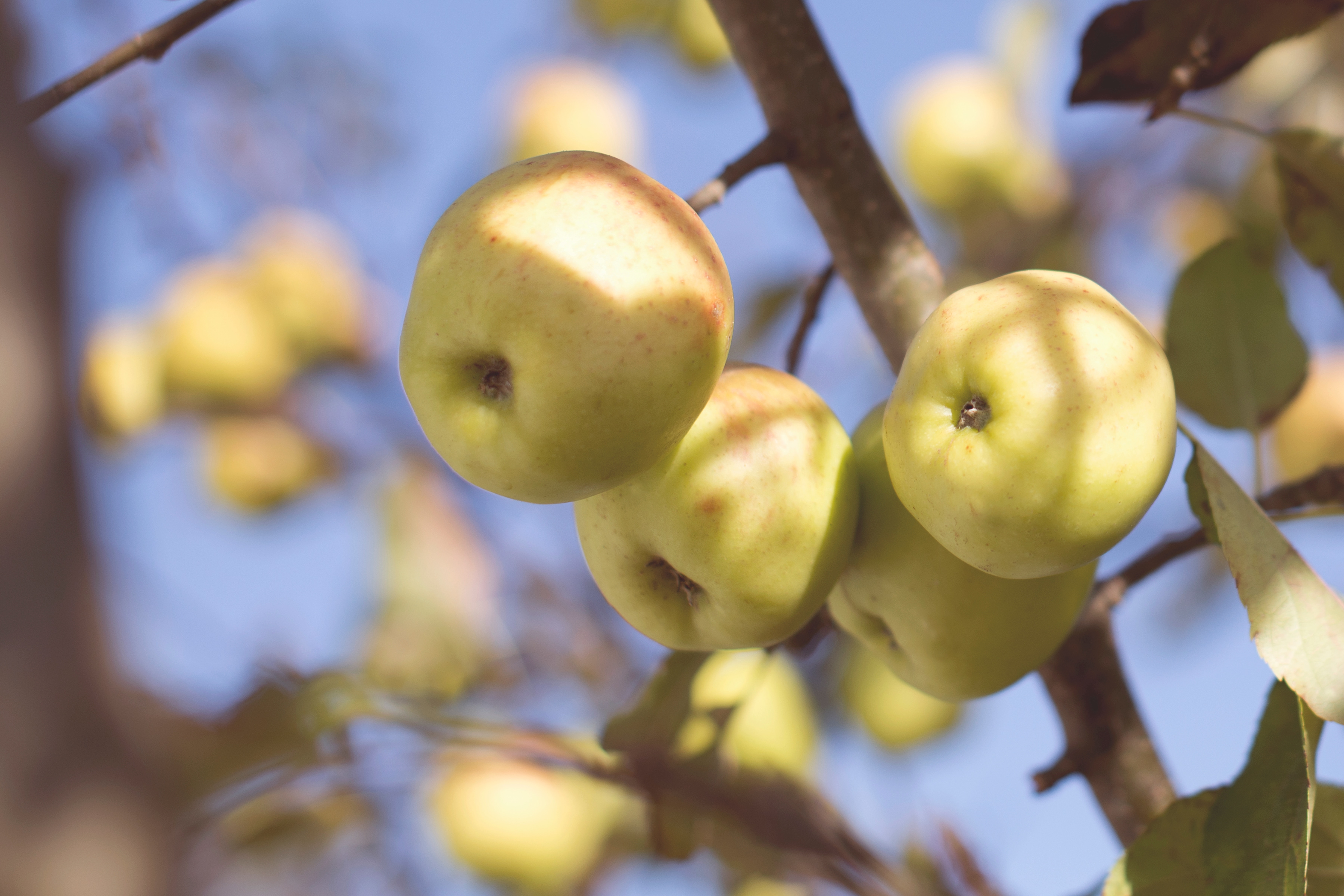
New Mexico’s diverse climate allows a surprising variety of fruit trees to flourish. Pears, apricots, and cherries are among the top choices for homeowners and gardeners. Pears, particularly the hardy varieties like ‘Bartlett’ and ‘Kieffer,’ thrive in New Mexico’s alkaline soils and can withstand its variable temperatures. Apricots, a favorite in the Southwest, blossom beautifully and bear delicious fruit, though choosing a late-blooming variety is essential to avoid potential frost damage. Cherry trees, while more challenging to grow due to their chill hour requirements, can still be fruitful, especially in New Mexico’s cooler regions. When selecting cherry varieties, ‘Stella’ and ‘Bing’ are highly recommended. With proper care and site selection, these fruit trees can provide aesthetic beauty to your landscape and a tasty harvest to enjoy year after year.
What is the state tree of New Mexico?
The state tree of New Mexico is the Piñon Pine (Pinus edulis). Funny enough, this tree is also known as a Colorado Pinyon. It was designated as the official state tree in 1948. The Piñon Pine is native to southwestern North America, particularly in New Mexico, Colorado, Arizona, and Utah. It is also sometimes referred to as the nut pine. The trees produce edible nuts, a staple food for Native Americans and are widely eaten as a snack and used in New Mexican cuisine. The Piñon Pine is an essential plant in the culture and biology of New Mexico. Santa Fe Botanical Garden has a fantastic article about the state tree of New Mexico here.
What are some uses of piñon pine in New Mexico?
The Piñon Pine is a versatile tree in New Mexico with several uses. Here are some of the uses of Piñon Pine in New Mexico:
- Windbreaks: Piñon Pine is suitable for windbreaks, essential in New Mexico’s arid climate.
- Food and cover for man and wildlife: The tree produces edible nuts that are a staple food for Native Americans and are widely eaten as a snack and used in New Mexican cuisine. The nuts are also a source of food and habitat for wildlife.
- Ornamental and recreational plantings: Piñon Pine is suitable for decorative and recreational plantings.
- Cultural significance: The Piñon Pine is an important plant in the culture and biology of New Mexico.
Overall, the Piñon Pine is a valuable tree in New Mexico, providing food, shelter, and cultural significance to the people and wildlife of the region. It makes a great choice to plant on your New Mexico property.
How to plant a tree in New Mexico?
New Mexico’s varied topography, fluctuating temperatures, and unique soil composition can challenge aspiring gardeners. However, planting trees can be rewarding and successful with the right approach. Here’s a step-by-step guide to ensuring your tree thrives in the Land of Enchantment:
- Choose the Right Location:
- Sunlight: Ensure your chosen tree species gets the right sunlight, considering New Mexico’s intense sun exposure.
- Wind: Some areas, especially in the high desert, experience strong winds. Select a location that provides some protection or consider planting a windbreak.
- Soil Preparation:
- Test the Soil: New Mexico soils can be alkaline. Conduct a pH test and amend the soil if needed.
- Dig the Hole: The hole should be twice as wide as the root ball and of the same depth.
- Soil Composition: Given the clay-heavy soil in parts of New Mexico, consider mixing in compost or organic matter to enhance drainage and fertility.
- Planting the Tree:
- Handle with Care: Gently remove the tree from its container, ensuring you don’t damage the roots.
- Positioning: The tree should sit at the same depth as it did in its original pot or slightly higher to account for settling.
- Fill and Firm: Backfill the hole, lightly firming the soil as you go to remove air pockets.
- Watering: Thoroughly water the tree after planting, ensuring the root zone is saturated.
- Mulching:
- Use a 3-inch layer of organic mulch around the tree, like wood chips or straw. This helps conserve moisture, regulate soil temperature, and reduce weed competition. Remember to keep mulch a few inches away from the tree trunk to prevent rot.
- Watering Regimen:
- New trees need consistent moisture, especially in New Mexico’s arid climate. However, overwatering can be detrimental. Deep, infrequent watering promotes strong root growth.
- Check the soil moisture regularly. If the top 2-3 inches of soil are dry, it’s time to water.
- Protection:
- Pests and Disease: Regularly inspect your tree for signs of pests or diseases. Some are specific to New Mexico and may require unique treatments.
- Physical Barriers: Consider using tree guards to protect young trees from rodents or any potential mechanical damage.
- Pruning:
- Pruning is essential to ensure a strong structure and remove any dead or diseased branches. However, refrain from heavy pruning in the first year to allow the tree to establish.
- Fertilizing:
- Given the nutrient variability in New Mexico’s soil, fertilization might be necessary. But always base this on a soil test to avoid over-fertilization.
In conclusion, if you follow these steps and consistently monitor your tree, you can enjoy the fruits of your labor (quite literally, in the case of fruit trees!) and ensure that your tree becomes a lasting part of New Mexico’s beautiful landscape.
Where is the best place to buy trees in New Mexico?
Sourcing healthy, well-nurtured trees is paramount when embarking on your tree-planting journey in New Mexico. One of the most renowned nurseries in the Albuquerque region stands out for several reasons:
Plant World Inc:
- Knowledgeable Staff: At Plant World, a team of friendly, knowledgeable staff awaits to assist with all your questions. Their expertise spans the local climate, soil conditions, and best tree varieties for the region. So whether you’re a seasoned gardener or planting your first tree, their insights can be invaluable.
- Variety Selection: They offer an impressive range of trees suited to New Mexico’s diverse conditions. From ornamental trees that add beauty to your landscape to native species that require minimal water, to a selection of fruitful varieties, you’ll find it all here.
- Quality Assurance: Trees at PlantWorld undergo rigorous care and monitoring, ensuring they’re disease-free and primed for planting. By choosing their trees, you’re investing in quality that translates to a healthier, more robust tree in your garden.
- Aftercare Support: Buying the tree is just the beginning. PlantWorld provides continued support with planting guidelines, care tips, and even disease management solutions tailored for New Mexico.
- Eco-Friendly Practices: In keeping with the spirit of the Land of Enchantment, PlantWorld employs sustainable farming practices. This means that by purchasing from them, you’re supporting eco-friendly initiatives and contributing to a greener state.
Local Farmers’ Markets:
Don’t forget to check out local farmers’ markets. Local growers often offer saplings or smaller plants that are acclimated to the area, and buying from them supports local agriculture.
Gardening Clubs and Societies:
Engaging with local gardening clubs or tree societies can provide insights into where members source their trees. These organizations often have deep community roots (pun intended!) and can offer valuable recommendations.
In conclusion, while PlantWorld stands out for its reputation and offerings, New Mexico is home to many tree-buying options. By investing time in understanding where your tree comes from, you’re taking the first step towards ensuring its long, healthy life in your backyard.
Where is your favorite place to source trees? Let us know in the comments below this article.
What is the best tree-planting service in New Mexico?
Navigating the diverse climates and soil conditions of New Mexico can be a challenging task for even the most experienced gardener. While knowledge and dedication play a pivotal role in tree care, sometimes professional expertise can make all the difference.
That’s where Duprees Trees comes into the picture.
With a longstanding reputation for excellence in tree care and planting services, our team ensures that every tree gets the best possible start and continues to flourish for years. So whether you’re planting ornamentals, fruit trees, or native species, entrusting this significant task to the professionals at Duprees Trees can guarantee success.
Ready to ensure your trees thrive in the Land of Enchantment? Click here to book a call with Duprees Trees and let the experts guide your green journey.


